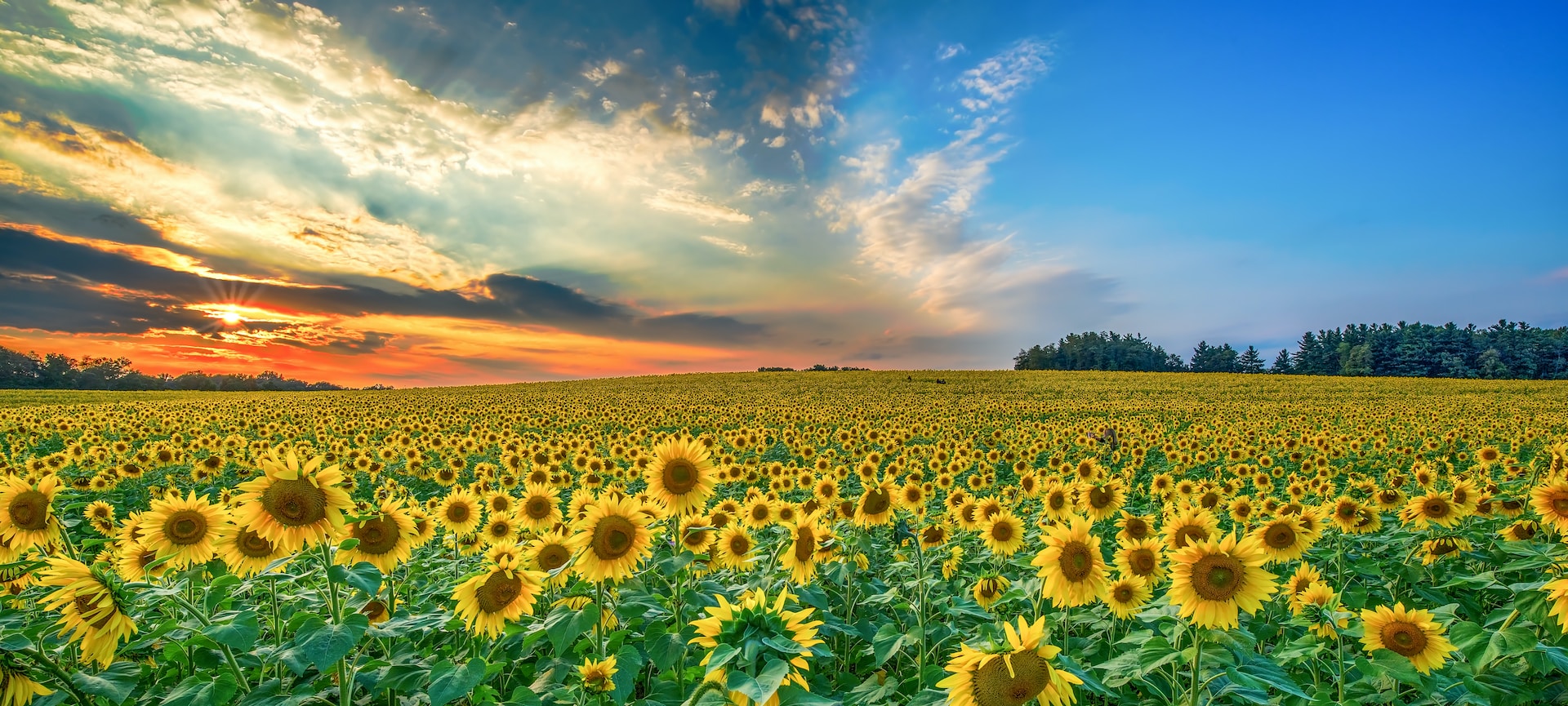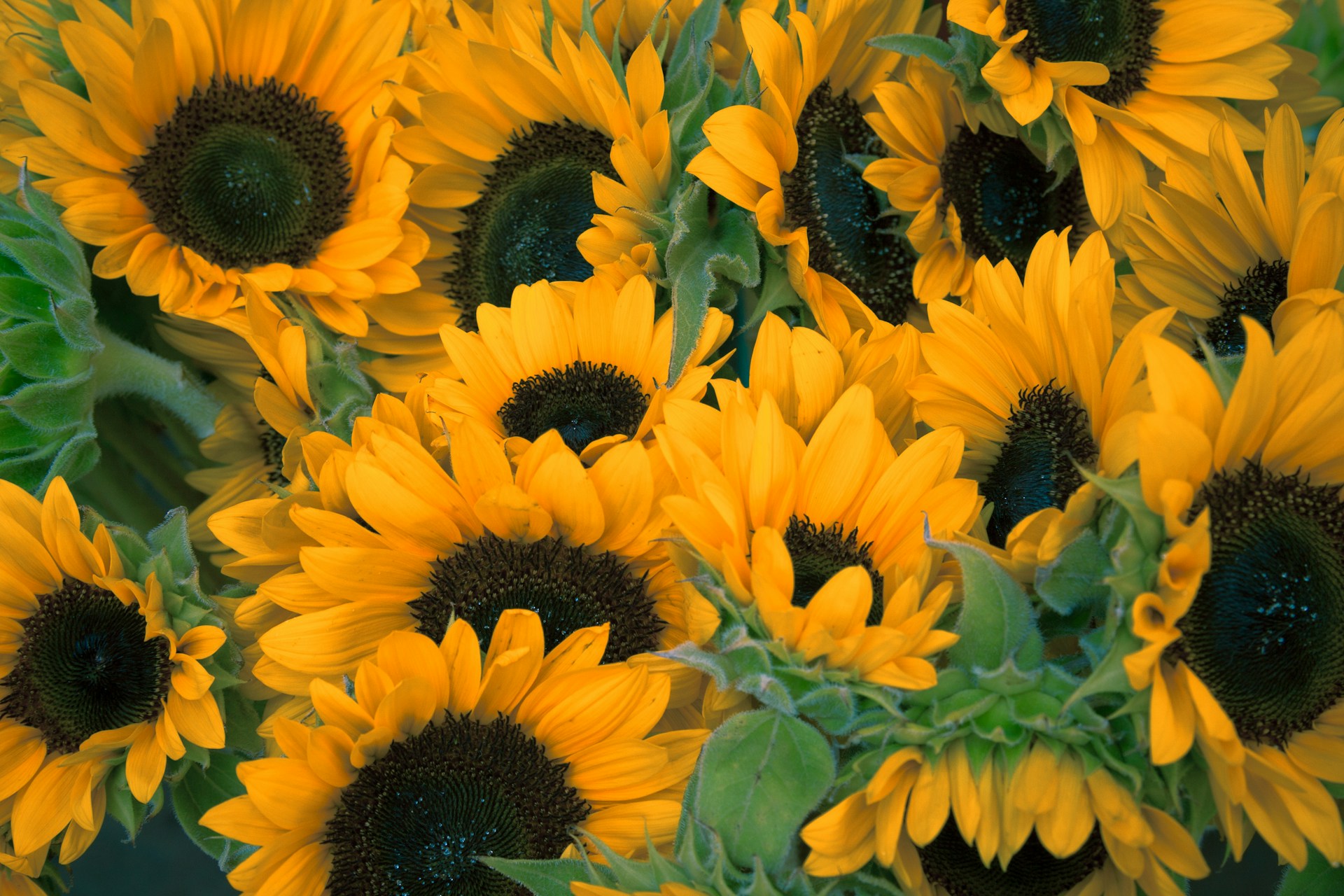
Sunflowers are the quintessential summer flower; bright, cheery and, well, a classic!
While Sunflowers are generally direct sown outdoors after last frost, it’s possible to start plants indoors early to get a head-start on the season and see some earlier blooms. It’s really important to start Sunflowers indoors from seed at the right time – more-so than most varieties – because of their taproot. Sunflowers are fast growers and extra sensitive to becoming root bound. However, if you plant them too late you might miss out on the early harvest advantage of starting indoors.
With this guide and free Sunflower Start Date Calculator, you’ll learn the perfect time to start Sunflower seedlings indoors. The best part – it doesn’t matter what zone you’re growing in!

Plant Start Date Calculator
Finding Your Local Last Frost Date
Not sure when your last frost date is? Don't know what a last frost date is? Don't worry!
If you're in Canada or the United States, our other free tool is here to help. It finds the nearest weather station to your location and displays frost dates calculated from historical data. As an added bonus, it also calculates different probabilities of frost on any given day - making it the most data-driven frost tool you'll find online.
If your garden enjoys a warm micro-climate or you're prepared to protect your plants with frost cloth, consider selecting an earlier, high-risk date to extend your gardening season. Conversely, if you're in a colder area or prefer to avoid the risk of frost, the low-risk date is your safest bet.
If you're gardening or farming outside the USA or Canada, try a quick internet search for "your closest town or city + last frost date" to find the date you need. Alternatively, speaking with local gardeners, flower farmers or nurseries about the last frost date they use can be very helpful.
Your Growing Zone: Not Important Here
While understanding your plant hardiness zone is crucial for perennials to survive winter lows, it actually doesn't really matter when you're starting Sunflowers from seed indoors. The focus should instead be on your last frost date, marking when it's safe to transition frost-sensitive seedlings outdoors without the threat of more frost. It doesn't matter much what the lowest temperature is outside in the winter if your seeds are resting in storage, or started under lights!
By using your last frost date and knowledge of how quickly Sunflowers grow, we can calculate the perfect indoor starting time for these seedlings. This makes sure they're ready for transplant when you are. If you start them too early, they'll become root-bound, stunted and productivity will suffer. If you start them too late, you might miss out on a head-start to the season - or even blooms from Sunflowers altogether!
About The Sunflower Seed Indoors Date Calculator
Our tool for calculating the best start date for starting Sunflower seedlings indoors is simple: all you have to do is input your last frost date, and it will offer a suggested planting timeframe. It's that simple!
For cut flower enthusiasts looking to elevate their gardening game or flower farmers growing many different varieties, consider trying out Bloom Manager. It's an all-in-one planning tool built specifically for cut flowers that not only aids in seed starting calculations but also helps in mapping out your garden or farm's layout, scheduling, and essential tasks, including predicting harvest times—all for free!
Growing Sunflowers from Seed Indoors

Soil Preparation:
- Choose a sterile, high-quality seed-starting mix to ensure optimal drainage and a safe first environment for your sunflower seeds.
- Prep your trays or soil blocks, making sure the soil is moistened beforehand
Sowing Time:
- Plant sunflower seeds about 1/2 inch deep in the soil; they need some cover to germinate effectively.
- Space your seeds a few inches apart in the tray to give each seed enough room to grow without overcrowding.
- After planting, gently water the soil to ensure it's evenly moist.
Germination Period:
- Sunflower seeds typically germinate within 7-10 days, but this can vary based on seeds and growing conditions. Ensure a warm environment, ideally between 70-85°F (21-29°C), to encourage germination.
- Keep the soil moist during this period but be careful not to overwater.
Light Needs:
- Sunflower seedlings need plenty of light to grow strong and healthy. A bright, south-facing window can work in a pinch, but for best results, use grow lights placed a few inches above the seedlings.
- Ensure the seedlings receive about 12-16 hours of light per day to mimic the long, sunny days of summer they love.
Watering:
- Maintain consistent soil moisture, ensuring it's never too dry or waterlogged. Sunflowers prefer well-drained soil, so let the top inch of soil dry out slightly before watering again.
Pinching:
- Unlike some plants, sunflowers generally do not require pinching (unless they're a branching variety!). They grow a central stem that leads to the main flower, and pinching could interfere with this growth.
Hardening Off:
- Begin to get your sunflower seedlings used to outdoor conditions after last frost date and as the weather warms. Start with short periods (1-2 hours) in a protected, shaded area outside, gradually increasing their exposure to sunlight and outdoor elements over the course of a week.
- This gradual introduction helps prevent shock, allowing the seedlings to adjust to wind, direct sunlight, and temperature fluctuations.
Transplanting:
- Once hardened off, and after all danger of frost has passed, transplant your sunflowers to their final location in your farm or garden.
- Space them about 6-36 inches apart, depending on the variety; larger branching varieties need more space to thrive. You'll find this information on the back of the seed packet or on an info sheet from your supplier.
- Choose a spot with full sun (at least 6-8 hours of direct sunlight per day) and well-drained soil for the best results.
With these steps, your indoor-started sunflowers will be well on their way to adding a burst of cheer and colour to your garden by late summer.
And a fun fact to finish things off:
Sunflowers are heliotropic in their early stages, meaning they will turn their heads to follow the sun from east to west each day until the stems thicken!
Happy growing!
